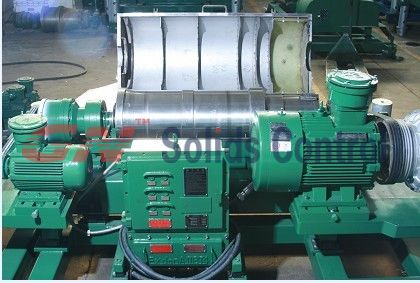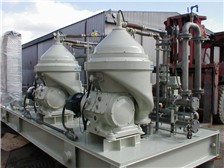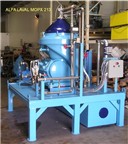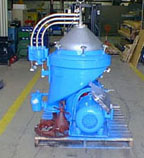November 03, 2009
EUNICE, N.M. The $2 billion first phase of construction on the National Enrichment Facility is in the home stretch.
The first cascades of centrifuge for the facility, located on Highway 176 just east of Eunice, are expected to be installed and tested by the end of the year, said Gregory Smith, chief operating officer for LES, the builder and operator of the plant.
At that point, U.S. Nuclear Regulatory Commission officials will come in and review the construction, to see if it was done as authorized in the license it issued LES in 2005. Smith said the company would also need to show NRC officials that processes, programs and people are in place to adequately operate the plant, and that the centrifuge cascades meet the quality requirements specified in the license.
The inspection process is expected to start Dec. 15 and last through Jan. 14., Smith said.
“We’re very close,” he said. “Our prediction is when the NRC completes it’s inspection in January, the plant will be ready or very near ready to operate.”
But the work won’t stop. Construction on phase two of the project is expected to start after the boards of LES and parent company Urenco give the go-ahead, something Smith said could happen next month.
Once the two phases are finished, the plant is expected to supply enriched uranium to meet half of the needs in the United States. So far, Smith said 101 of the 103 nuclear plants in the United States are customers of LES.
That number could eventually increase even more, because Smith said even more phases could be built in the future.
Because of the power of enriched uranium, Smith said it only takes about 7,000 tons of the substance to power all the nation’s nuclear plants for a year.
“One thing about nuclear facilities is the physical quantities (of fuel) is extremely small compared to natural gas or coal,” he said.
The plant has employed up to 1,800 people during construction. Smith said the number of workers is currently a little more than 1,000. Once construction is completely finished, which isn’t expected to happen until 2016, Smith said the plant will have around 300 employees.
Wesley Burnett, Andrews economic development director, said about 35 to 40 percent of the people working on the LES project live in the Andrews area.
“To us, it meant a lot of new construction in our area,” Burnett said. “Our population has seen some pretty increases along with the Waste Control (Specialties, a low-level radioactive disposal site) and some other things.”
But Don Dowdey, chairman of the Big Bend Regional Sierra Club, said he is concerned about the LES and Waste Control sites, which are located directly across the Texas-New Mexico border from each other, along with the Waste Isolation Pilot Plant, an underground repository for radioactive waste used in production of nuclear weapons that’s located east of Carlsbad, creating a “nuclear corridor.”
“The Sierra Club’s concern has always been about the disposal of nuclear waste, and we don’t believe we’ve come up with any way to do it that’s safe,” he said. “This sort of just adds to the basic idea of creating more. Our basic idea is creating less.”
While the process of operating the site and continuing with construction will be challenging, Smith said he looks forward to getting production going. The facility has already sold most of its production scheduled through 2020.
“It’s a real matter of pride to see that in operation,” he said. “We always point out to our employees that it’s a marathon, not a sprint.”
source: www.oaoa.com












